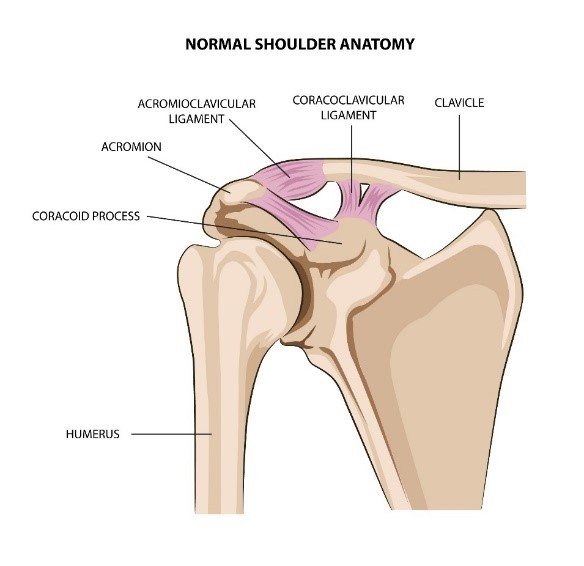What is it?
The ACJ (acromioclavicular joint) is a small joint in your shoulder that connects your collar bone (clavicle) to your shoulder gridle (acromion). Its role is to stabilise the shoulder during movement and when putting weight through your arm. The ACJ has 3 main ligaments: the superior and inferior acromioclavicular ligaments and the coracoacromial ligament (which is composed of 2 expansions).
An injury to the ACJ involves a stretch or sprain to any of these ligaments on the lateral end of the clavicle.
What causes it?
Direct or indirect trauma may cause this injury. Direct trauma is landing on the outside point of your shoulder with force. For example, falling off your bike or landing on your shoulder during a rugby tackle. Landing with force on an outstretched arm is an indirect injury.
What does it feel like?
The pain with an ACJ injury is local and you will be able to touch where it hurts. It will feel sore and may swell shortly after the injury. Your collar bone may be slightly raised in comparison to the other side, depending on the severity of the injury. This is a step deformity due to stretching or tearing of the ligaments.
You may find it uncomfortable to lift your arm. It may also feel sore to lean on your elbow or lie on your injured side.
How is it diagnosed?
You Physiotherapist can diagnose a less severe injury. A more severe injury may warrant an assessment by a doctor and an X-ray. The same mechanism can cause several different shoulder injuries, including a break in your collar bone. You may need an x-ray in-order to see the extent of the injury.
Your Physiotherapist will assess your symptoms and go through specific movements and tests to diagnose your injury.
How can Back in Action Physiotherapy help?
Your Physiotherapist will be able to diagnose your injury and guide you through an individualised rehabilitation programme depending on your needs. They will observe how your shoulder and shoulder blade are moving. This is important as your injury may have affected how the shoulder girdle moves. They will also assess your strength, and with the findings of the assessment give you strengthening and control exercises to help improve your symptoms. The physio will look at other joints around the shoulder complex and the neck to check that they are moving well. They will also advise you on what activities to avoid initially and then progress you on to returning to the activity or sport that you love!

